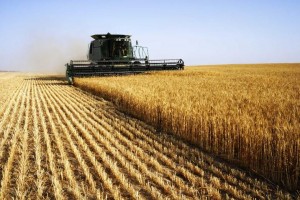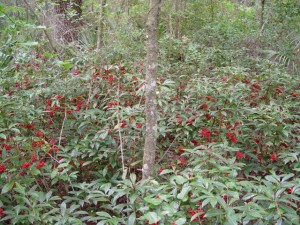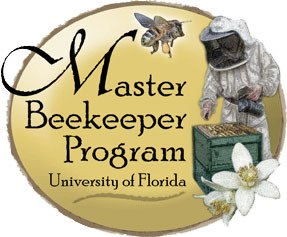The University of Florida IFAS Extension offers a database of fact sheets available for free download on the Internet called EDIS (Electronic Data Information Source) that has many publications of interest to farmers and ranchers in Northwest Florida. Each fact sheet has a PDF or printer friendly link in the top left corner. The following are just a few of the new fact sheets that were recently added to the collection pertaining to commercial agriculture production. http://edis.ifas.ufl.edu
Row Crops
 Management Considerations for Wheat Production in Florida
Management Considerations for Wheat Production in Florida
Higher wheat prices created the impetus for growing wheat in the southeastern United States. Since increasing amounts of corn have been diverted to ethanol production, there is a shortage of grain for America’s livestock industry. This shortage results in higher wheat and soybean prices. Wheat and soybean have been grown together as a double crop throughout the Southeast for many years, which generally increases profitability compared with growing only one of the crops. Planting wheat followed by cotton, peanut or grain sorghum has also become a common practice. The best management practices for high yields of wheat in the Southeast Coastal Plain are well established. This 3-page fact sheet lists production practices for small grains in Florida. Written by D.L. Wright, A.R. Blount, R.D. Barnett, C.L. Mackowiak, N. Dufault, and J. Marois, and published by the UF Department of Agronomy, October 2013.
http://edis.ifas.ufl.edu/pdffiles/AG/AG29300.pdf
Conversions of parts per million on soil test reports to pounds per acre
Soil testing and the resulting fertilization recommendations are critical for appropriate nutrient management in commercial vegetable production, but growers and soil experts sometimes speak different languages. This 8-page fact sheet provides a simple conversion method for crop consultants, crop advisors, growers, students, and researchers who are interested in nutrient and water management of crop production. Written by Guodong Liu, Yuncong Li, and Aparna Gazula, and published by the UF Department of Horticultural Sciences, August 2013.
http://edis.ifas.ufl.edu/pdffiles/HS/HS122900.pdf
Horticulture
 University of Florida Potato Variety Spot Light: Red LaSoda
University of Florida Potato Variety Spot Light: Red LaSoda
Red LaSoda is the red-skinned fresh-market potato standard for Florida. It was observed in 1949 as a deep red mutant of LaSoda in the Louisiana potato breeding program. It has been in trials over many seasons and at many locations in Florida including university and grower sites. Production and quality results provided in this 4-page fact sheet are summarized from the red-skinned fresh-market trials conducted by the University of Florida over the past 14 seasons. Written by Lincoln Zotarelli, Doug Gergela, Chad M. Hutchinson, David Dinkins, and Edsel Redden, and published by the UF Department of Horticultural Sciences, August 2013.
http://edis.ifas.ufl.edu/pdffiles/HS/HS32300.pdf
 Cabbage aphid Brevicoryne brassicae Linnaeus (Insecta: Hemiptera: Aphididae)
Cabbage aphid Brevicoryne brassicae Linnaeus (Insecta: Hemiptera: Aphididae)
Cabbage aphids cause significant yield losses to many crops of the family Brassicaceae, which includes the mustards and crucifers. It is important to have a comprehensive understanding of this pest and its associated control measures so that its spread and damage can be prevented. This 5-page fact sheet was written by Harsimran Kaur Gill, Harsh Garg, and Jennifer L. Gillett-Kaufman, and published by the UF Department of Entomology and Nematology, October 2013.
http://edis.ifas.ufl.edu/pdffiles/IN/IN101400.pdf
Livestock
 Identification and Control of Coral Ardisia (Ardisia crenata): A Potentially Poisonous Plant
Identification and Control of Coral Ardisia (Ardisia crenata): A Potentially Poisonous Plant
Coral ardisia, also known as coral berry, spice berry, and scratchthroat, was introduced to Florida in the early 1900′s for ornamental purposes. Since then, it has escaped cultivation, and it is found in hardwood hammocks and other moist, natural-wooded areas and grazing lands. Although there is no published literature supporting the theory that coral ardisia is toxic, it is suspected that the berries and/or foliage are poisonous to livestock, pets, and humans. This 3-page fact sheet was written by B. A. Sellers, Sarah Lancaster, K. A. Langeland, J.A. Ferrell, Michael Meisenberg, and J. Walter, and published by the UF Department of Agronomy, November 2013.
http://edis.ifas.ufl.edu/pdffiles/AG/AG28100.pdf
 Florida Master Beekeeper Program Requirements
Florida Master Beekeeper Program Requirements
The Master Beekeeper Program (MBP) is a five-year (minimum) beekeeper training and certification program provided by the University of Florida. One must already be a beekeeper to enter the program. This 22-page fact sheet was written by James Ellis, Jerry Hayes, Catherine Zettel Nalen, William H. Kern, Ray Zerba, Brad Burbaugh, and Jeanette Klopchin, and published by the UF Department of Entomology and Nematology, October 2013.
http://edis.ifas.ufl.edu/pdffiles/IN/IN84700.pdf
- Northwest Florida Beef Cattle Conference & Trade Show – February 11 - December 19, 2025
- Friday Feature:The Sears Catalog –How Rural America Shopped before the Internet - December 19, 2025
- November 2025 Weather Summary & Winter Outlook - December 5, 2025

